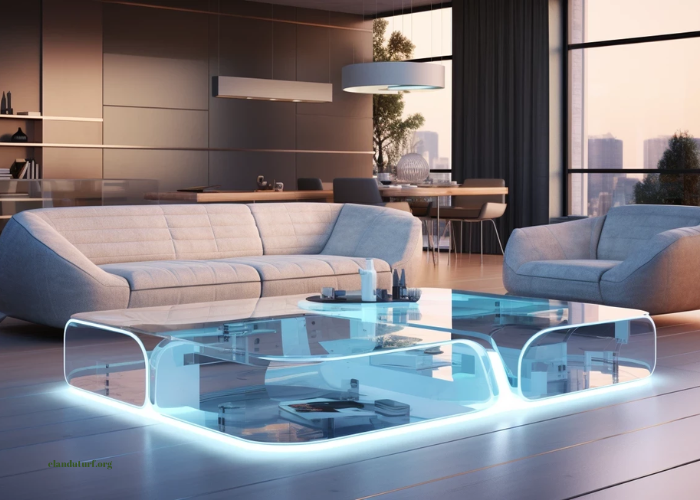In today’s fast-paced world, modern home design has evolved to reflect the need for not only aesthetic beauty but also functional, efficient living spaces. As people increasingly seek homes that suit their lifestyle demands, design trends have shifted toward solutions that balance form and function. These designs are often inspired by a minimalist approach, focusing on clean lines, innovative materials, smart technology, and a greater connection to the natural environment. This article delves into the key aspects of modern home design trends that foster a functional lifestyle, touching upon various elements like spatial planning, sustainability, and technology integration.
Minimalism with Purpose: Less is More
One of the most significant modern home design trends is minimalism, which emphasizes the concept of “less is more.” This design philosophy focuses on creating spaces that are free from clutter and distractions, allowing individuals to focus on what’s important in their lives. Minimalism doesn’t necessarily mean living with nothing—it means curating your space to include only items that serve a purpose or bring joy.
Minimalist designs often feature clean lines, open spaces, and neutral color palettes. White, gray, black, and beige dominate the scene, with splashes of bold colors used sparingly to create contrast. Furniture and décor are kept simple yet functional, with an emphasis on multi-use items that optimize space.
The minimalist trend also extends to materials. Homeowners are opting for sleek finishes such as stainless steel, glass, and smooth wood. Hidden storage solutions, such as under-bed drawers or cabinets that blend seamlessly into the walls, are a hallmark of this style, ensuring that everything has its place while keeping the home visually clutter-free.
Open-Concept Living: Blurring Boundaries
Gone are the days of rigid walls dividing the kitchen, dining room, and living areas. Modern homes are increasingly designed with open-concept layouts that create a seamless flow between different functional spaces. This not only allows for better interaction and communication within the household but also maximizes the use of space.
Open-concept designs often make use of large windows and glass doors to enhance natural lighting and create a connection between indoor and outdoor spaces. This openness also makes smaller homes feel larger, creating a sense of expansiveness even in urban environments.
Furniture in open-concept spaces tends to be modular, allowing homeowners to easily rearrange or adapt their layout based on their needs. For example, movable kitchen islands, foldable dining tables, or sectional sofas allow for flexible configurations that suit different occasions, from casual family gatherings to formal entertaining.
Sustainability and Eco-Friendly Materials: Conscious Living
As the world becomes more environmentally conscious, sustainable living has become a priority in modern home design. Homeowners are increasingly looking for ways to reduce their carbon footprint by incorporating eco-friendly materials and energy-efficient systems into their homes.
Materials like reclaimed wood, recycled steel, bamboo, and natural stone are popular choices in modern home construction and design. Not only are these materials sustainable, but they also offer a warm, organic aesthetic that contrasts beautifully with more industrial elements like metal and glass.
Energy efficiency is another key component of sustainable home design. Features such as solar panels, energy-efficient windows, and smart thermostats are becoming commonplace. Homes are also designed to make the most of natural light and ventilation, reducing the need for artificial lighting and cooling systems. Green roofs, rainwater harvesting systems, and even home gardens contribute to sustainability, allowing homeowners to live in harmony with nature while reducing their environmental impact.
Smart Homes: Integrating Technology for Functionality
Technology has become a cornerstone of modern home design, as smart homes are becoming increasingly popular. These homes use technology to enhance convenience, efficiency, and security, seamlessly integrating it into daily living. Whether it’s controlling the lights, temperature, or even the locks on your doors, smart home systems give homeowners the power to manage their homes from their smartphones or voice-controlled devices.
Popular smart home features include automated lighting systems, smart thermostats, and voice-activated assistants like Amazon’s Alexa or Google Home. These systems allow homeowners to control various aspects of their home with ease, making daily tasks more efficient. For example, smart refrigerators can track your grocery inventory and even suggest recipes based on what you have on hand.
Home automation also extends to security, with smart locks, cameras, and alarm systems providing real-time monitoring and control. These features not only offer peace of mind but also enhance the overall functionality of the home.
Multifunctional Spaces: Adapting to Changing Needs
One of the defining aspects of modern home design is the creation of multifunctional spaces. As more people work from home, there’s a growing demand for spaces that can serve multiple purposes. A living room may double as a home office during the day, or a guest room might transform into a home gym when not in use.
Furniture that serves multiple functions is key in these spaces. For example, fold-out desks, convertible sofas, and Murphy beds can help homeowners maximize their space without sacrificing comfort or style. Built-in shelving and storage units further contribute to the functionality of a room, keeping items organized while ensuring the space remains adaptable.
The rise of remote work has also spurred the development of dedicated home offices or workspaces that can be easily integrated into other areas of the home. These spaces prioritize ergonomics, with adjustable desks and chairs that ensure comfort for long hours of work. Soundproofing and optimized lighting are also important considerations, ensuring that the workspace is both productive and pleasant.
Biophilic Design: Bringing Nature Indoors
Biophilic design is a growing trend that seeks to connect homeowners with nature, even in urban settings. This design philosophy emphasizes the use of natural elements, such as plants, natural light, and organic materials, to create a calming, rejuvenating environment.
Large windows, skylights, and indoor gardens are some of the most popular biophilic design elements. These features not only bring more natural light into the home but also foster a connection to the outside world. The use of natural materials, like wood, stone, and wool, further enhances this connection, providing a tactile experience that promotes a sense of well-being.
Indoor plants are also a key feature of biophilic design. From small succulents to large, leafy trees, incorporating greenery into the home not only enhances the aesthetic but also improves air quality and promotes relaxation.
Personalization and Flexibility: Tailored to Individual Lifestyles
While modern home design trends often emphasize sleek, minimalist spaces, there’s a growing emphasis on personalization. Homeowners today want spaces that reflect their personal tastes and lifestyles, leading to the rise of flexible designs that can be easily adapted to individual needs.
Customization in modern home design can be seen in everything from the choice of materials to the layout of the home. For example, some homeowners might prioritize an expansive kitchen for cooking and entertaining, while others may prefer a smaller kitchen with more emphasis on living and recreational spaces.
The trend towards personalization also extends to the use of color, texture, and pattern. While neutral palettes dominate modern design, more and more homeowners are incorporating bold accent walls, unique textures, and personalized art to make their homes feel truly their own.
Wellness-Focused Design: Creating Spaces for Health and Well-being
As people become more aware of the importance of mental and physical health, there’s a growing trend toward wellness-focused home design. This trend goes beyond simple aesthetics and focuses on creating spaces that promote well-being, relaxation, and mindfulness.
Wellness-focused design often includes features like home gyms, meditation spaces, and spa-like bathrooms. Natural materials, soft lighting, and calming color schemes are used to create environments that foster relaxation and stress relief.
Air and water filtration systems, soundproofing, and non-toxic materials are also important aspects of wellness-focused design. These elements ensure that the home is not only beautiful and functional but also promotes a healthy, comfortable lifestyle.
Sustainable Outdoor Living Spaces
Outdoor spaces have become an integral part of modern home design, especially in the post-pandemic world where spending time outdoors has become essential for health and wellness. Decks, patios, and gardens are designed with the same attention to detail as interior spaces, providing functional and aesthetically pleasing areas for relaxation, dining, and entertainment.
Sustainability plays a significant role in outdoor design as well. Homeowners are increasingly incorporating eco-friendly elements such as drought-tolerant plants, rainwater harvesting systems, and solar-powered outdoor lighting. These features not only enhance the beauty of outdoor spaces but also contribute to a more sustainable, environmentally conscious lifestyle.
Outdoor kitchens, fire pits, and comfortable seating areas are popular features, transforming backyards into extensions of the home. These spaces are designed to be used year-round, with weather-resistant materials and features that allow homeowners to enjoy outdoor living regardless of the season.
Conclusion: The Future of Functional Modern Home Design
Modern home design trends continue to evolve, driven by the desire for functionality, sustainability, and personal well-being. As technology advances and environmental concerns grow, future homes will likely integrate even more smart systems, sustainable materials, and wellness-focused elements.
The homes of tomorrow will be even more adaptable, efficient, and personalized to meet the diverse needs of individuals and families. Whether you live in a small urban apartment or a sprawling suburban home, the principles of modern home design—minimalism, sustainability, technology integration, and multifunctionality—can help create a space that is not only beautiful but also enhances your quality of life. The focus is on creating homes that work for you, enabling a balanced, efficient, and fulfilling lifestyle in the modern world.







